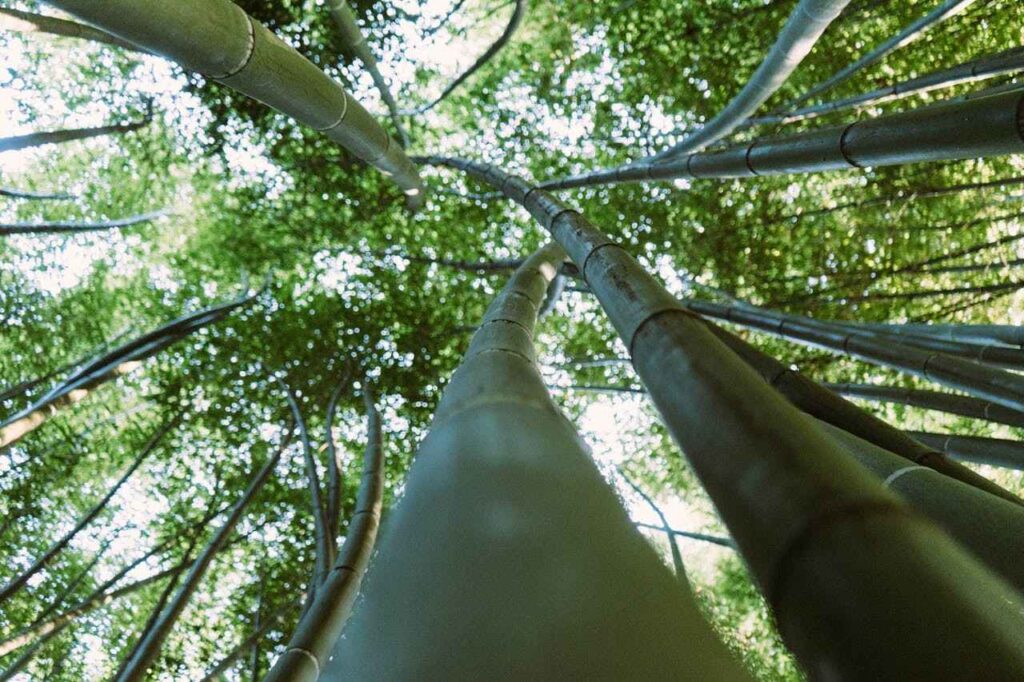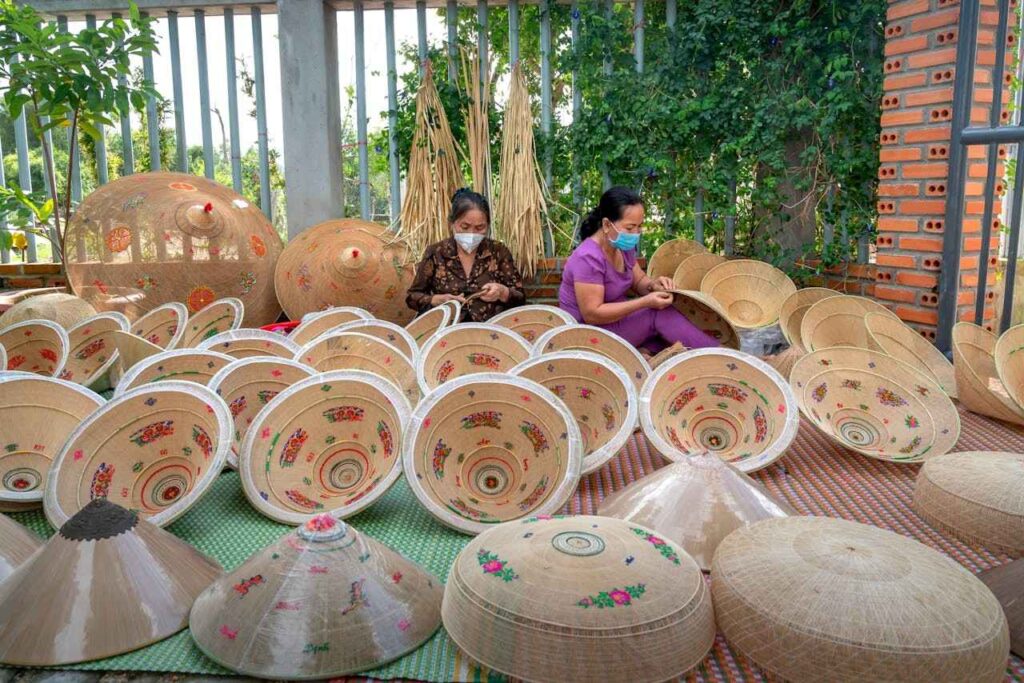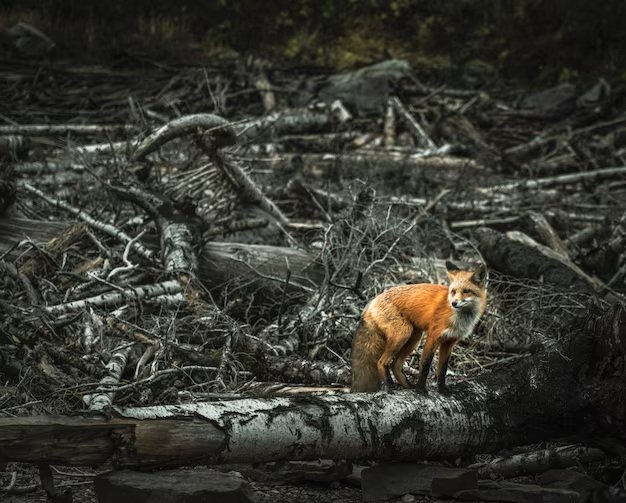Bamboo Uses and Benefits to the Environment
When we think of eco-friendly materials, bamboo might not be the first thing that comes to mind. Yet this humble plant is making a significant impact on both industries and the environment. Thanks to its rapid growth and minimal resource needs, bamboo is becoming a sustainable alternative across various sectors.
Bamboo’s environmental benefits are impressive. It can sequester carbon, helping reduce greenhouse gases, and it produces about 35% more oxygen than an equivalent area of trees, greatly improving air quality.
Economically, the global bamboo market is on the rise. Valued at around $74.52 billion in 2024, it’s projected to reach $79.33 billion by 2025, growing at a CAGR of 6.5%.
In places like Uganda, bamboo’s potential is gaining attention. The government plans to plant 300,000 hectares by 2029 to fight erosion and create jobs.

In This Article
- What Makes Bamboo So Special?
- Practical Uses of Bamboo in Sustainable Development
- Case Studies: Bamboo’s Impact on Communities and the Environment
- Environmental Benefits Explored
- The Science Behind the Sustainability
- Bamboo Challenges and Solutions
- Bamboo and Climate Change
- Conclusion: How You Can Get Involved?
What Makes Bamboo So Special?
Some species of bamboo can grow nearly 91 cm (35 inches) in just 24 hours, which makes it the fastest-growing plant on Earth. While hardwood trees often take decades to fully mature, bamboo can be harvested in just three to five years. This incredibly fast growth rate makes bamboo one of the most renewable and efficient natural resources we have today.
What’s more, bamboo doesn’t need to be replanted after it’s harvested. It regenerates naturally through its underground rhizome root system, which keeps the plant growing again and again without human intervention. This self-sustaining growth also helps bind the soil together, reducing erosion and preserving land quality over time.
Bamboo also plays a powerful role in land restoration efforts. In India, for example, more than 85,000 hectares of degraded land have been brought back to life using bamboo, turning barren spaces into green, productive landscapes. Studies in the Philippines show that giant bamboo plantations have helped reduce soil erosion by up to 75%, making it a critical tool for fighting land degradation and supporting more resilient farming systems.
Recognising its full potential, countries around the world are now turning to bamboo as a natural solution for large-scale environmental restoration. Under the Bonn Challenge, many have pledged to restore millions of hectares of damaged land using bamboo as a central part of their strategy. With benefits that reach from the soil to the sky, bamboo is helping shape a greener, healthier future for our planet.
Practical Uses of Bamboo in Sustainable Development
1. Sustainable Construction
Bamboo’s strength is truly impressive. At the Green School in Bali, designed by IBUKU, bamboo arches span 19 meters, forming the structure of The Arc—a testament to bamboo’s structural capabilities. Walking through this space, one can’t help but feel enveloped by nature’s elegance and resilience.
2. Eco-Friendly Textiles
Bamboo fabric is gaining popularity for its softness, breathability, and antibacterial properties. Unlike traditional cotton, which requires significant water and pesticide use, bamboo grows rapidly without the need for harmful chemicals. This makes it a more sustainable choice for clothing and bedding.
3. Biodegradable Products
From toothbrushes to cutlery, bamboo is replacing plastic in everyday items. These products decompose naturally within months, significantly reducing landfill waste. Choosing bamboo over plastic in our daily routines is a simple yet impactful step toward environmental conservation.
4. Paper Production
Bamboo’s role in paper production is noteworthy. In China and India, bamboo has been used for centuries to produce paper, with one hectare yielding over 20 tonnes annually. This sustainable practice helps preserve forests and meets the growing demand for paper products.
5. Renewable Energy and Biochar
Beyond its structural and aesthetic applications, bamboo plays a significant role in renewable energy. Through pyrolysis, bamboo biomass can be converted into biochar—a carbon-rich product that enhances soil fertility and sequesters carbon. Studies have shown that bamboo-derived biochar can yield up to 80% under optimal conditions. In Ghana, initiatives like the Bamboo Energy Initiative train communities, especially women, to produce and sell bamboo briquettes. These briquettes serve as a cleaner alternative to traditional firewood, reducing indoor air pollution and deforestation.
Case Studies: Bamboo’s Impact on Communities and the Environment
Case Study 1: Greening the Desert in Ethiopia
Ethiopia holds about 67% of Africa’s bamboo resources, yet for years, this potential remained largely untapped. Recognising bamboo’s promise, initiatives like the Forests4Future Project have been pivotal. In regions like Lake Chamo, local enterprises such as Addis Tesfa and Birhan Chora were established, training youths in bamboo processing. During the COVID-19 pandemic, these enterprises produced 2,000 bamboo beds for clinics, showcasing bamboo’s adaptability and the community’s resilience.
Moreover, Ethiopia’s bamboo sector has the potential to generate $5 billion in revenue and create 1.3 million jobs.
Case Study 2: The Philippines – Typhoon-Resilient Housing
The Philippines, frequently affected by typhoons, has turned to bamboo for sustainable solutions. After Typhoon Haiyan, bamboo’s flexibility and strength made it an ideal material for rebuilding homes. Architect Yolanda David highlighted its benefits: “We needed a material that was local, fast-growing, and resilient. Bamboo was the clear answer.”
Beyond reconstruction, the Philippines has embraced bamboo in various initiatives. Collaborations with organisations like the International Bamboo and Rattan Organisation (INBAR) have promoted bamboo planting events and skill training, reinforcing its role in environmental protection and climate change mitigation.

Case Study 3: Colombia – Community Empowerment Through Bamboo Crafts
In Colombia, bamboo has become a catalyst for community empowerment. Projects like Bambuzonía, supported by INBAR, focus on sustainable bamboo management and income generation. In regions like La Macarena, affected by decades of conflict, bamboo initiatives have provided alternative livelihoods, fostering peace and development.
Furthermore, Colombia’s bamboo sector has created approximately 100,000 jobs, both directly and indirectly, underscoring its impact on the nation’s economy and social fabric.

Environmental Benefits Explored
1. Erosion Control and Soil Health
Bamboo’s extensive root systems are nature’s answer to soil erosion. These roots bind the soil, preventing it from washing away during heavy rains. On slopes and riverbanks, bamboo acts as a natural barrier against landslides and erosion. Moreover, these roots enhance soil quality by promoting better water retention and nutrient cycling, leading to healthier and more fertile land.
2. Air and Water Purification
Bamboo isn’t just a passive plant; it’s an active purifier. Its leaves and stems absorb pollutants from the air, including harmful gases like nitrogen dioxide. Studies have shown that bamboo can absorb up to 35% more nitrogen dioxide than similar-sized hardwood forests.
Beyond air purification, bamboo also plays a role in water filtration. Its root systems can trap heavy metals and other pollutants, making it a valuable ally in cleaning contaminated water sources.
3. Biodiversity Support
Bamboo forests are bustling ecosystems. They provide shelter and food for a myriad of species, from the iconic giant panda to countless insects and birds. As deforestation and land conversion threaten natural habitats, bamboo stands as a refuge, supporting biodiversity and maintaining ecological balance.
The Science Behind the Sustainability
A comprehensive review of life cycle assessments (LCA) reveals that bamboo products often have a lower Global Warming Potential (GWP) compared to conventional materials. This means that from cultivation through processing and manufacturing, bamboo tends to contribute less to greenhouse gas emissions. However, it’s important to note that factors such as energy sources used during processing can influence these outcomes.
Bamboo’s carbon sequestration capabilities are particularly noteworthy. According to recent research published in Climate, well-managed bamboo stands can sequester anywhere from 5 to 24 tons of carbon dioxide per hectare annually, depending on species, climate, and cultivation practices. This wide range not only matches but often exceeds the sequestration rates of many traditional hardwood forests. Given bamboo’s rapid growth and frequent harvest cycles, it stands out as a powerful nature-based solution for climate change mitigation.
In terms of embodied energy—the total energy required for a material’s lifecycle—bamboo also performs favourably. For instance, the embodied energy of bamboo is significantly lower than that of materials like steel and aluminium, making it a more energy-efficient choice.
Bamboo Challenges and Solutions
1. Invasive Potential
Certain bamboo species, especially “running” types, can spread rapidly through underground rhizomes, leading to unintended invasions in gardens and neighbouring properties. To manage this, installing physical barriers, such as 30-40 mil thick plastic rhizome barriers at a depth of 22-30 inches, can effectively contain the spread. Regular monitoring and maintenance of these barriers are crucial to prevent breaches.
2. Processing Impacts
While bamboo itself is a sustainable resource, the method of processing it into textiles matters. Mechanical processing, which involves crushing the bamboo and using natural enzymes, is environmentally friendly. In contrast, chemical processing uses harsh substances like sodium hydroxide and carbon disulfide, posing risks to both the environment and workers. Opting for mechanically processed bamboo products, such as bamboo linen, supports eco-friendly practices.
3. Monoculture Cultivation
Cultivating bamboo in monocultures can lead to biodiversity loss and increased vulnerability to pests and diseases. Diversifying bamboo plantations with other plant species and implementing sustainable agroforestry practices can enhance ecosystem resilience and promote biodiversity.
4. Supply Chain Challenges
The bamboo industry faces supply chain issues, including inadequate infrastructure for transportation and processing, especially in rural areas. This can limit the availability of high-quality bamboo products. Investing in infrastructure development and supporting local communities can strengthen the supply chain and ensure the sustainability of bamboo products.
Bamboo and Climate Change
According to INBAR, integrating bamboo into national climate strategies could reduce emissions by up to 10% in some developing countries.
India’s National Bamboo Mission exemplifies this potential. Since its re-launch in 2018, the mission has restored over 361,000 hectares of land, promoting sustainable agriculture and rural development. By focusing on bamboo cultivation and market integration, the initiative supports both environmental conservation and economic growth.
However, challenges remain. One significant hurdle is the lack of awareness about bamboo’s benefits. Many communities are unaware of their potential for sustainable development. To address this, educational campaigns and community engagement programs are essential.
Another challenge is the limited infrastructure for bamboo processing and marketing. Without proper facilities, farmers struggle to add value to their bamboo products. Investing in processing units and establishing market linkages can empower farmers and boost the bamboo industry.
Conclusion: How You Can Get Involved?
1. Choose Bamboo Products
Opting for products made from responsibly sourced bamboo supports sustainable harvesting practices. Look for items certified by the Forest Stewardship Council (FSC), ensuring they meet rigorous environmental and social standards. FSC-certified bamboo forests account for 17.8% of the world’s total bamboo area, with the majority located in Asia.
2. Support Bamboo Initiatives
Organisations like the International Bamboo and Rattan Organisation (INBAR) are dedicated to promoting bamboo for sustainable development. Donations to such organisations aid in projects that utilise bamboo to combat climate change and support local economies.
3. Grow Your Own Bamboo
Cultivating bamboo at home is feasible and rewarding. Clumping varieties, such as Bambusa or Fargesia, are recommended as they grow in tight clusters and are less invasive than running types. These can thrive in pots or garden spaces, adding beauty and privacy to your surroundings.
4. Advocate for Bamboo in Urban Planning
Encourage local authorities to incorporate bamboo into urban development plans. Bamboo’s rapid growth and carbon sequestration capabilities make it an excellent choice for green building materials and urban landscaping. Your voice can help promote policies that favour sustainable materials in construction.
5. Addressing Challenges in Bamboo Commercialisation
Despite its benefits, integrating bamboo into mainstream markets faces hurdles, such as cost competitiveness with traditional materials. Supporting research and policies that focus on reducing production costs and enhancing processing techniques can facilitate wider adoption.
6. Ensuring Product Authenticity
Recent findings have revealed that some bamboo products may contain materials from other woods, raising concerns about product authenticity. As a consumer, staying informed and choosing products from transparent, reputable brands helps ensure that your purchases align with sustainability goals.







